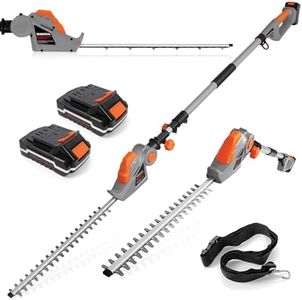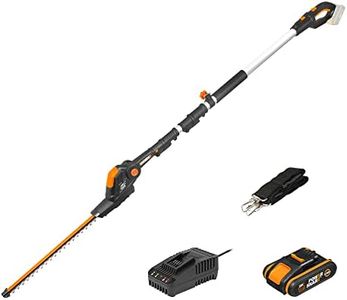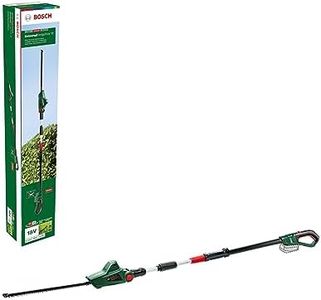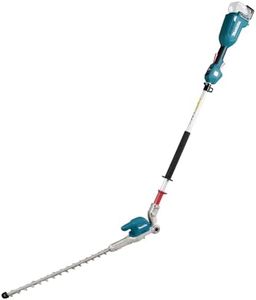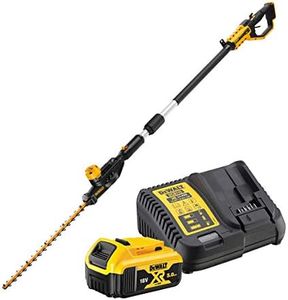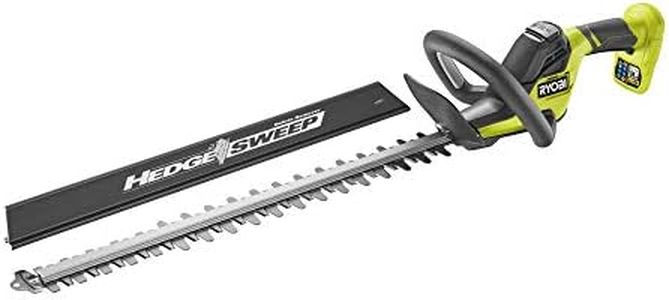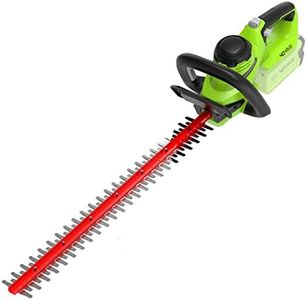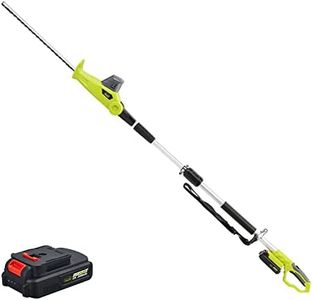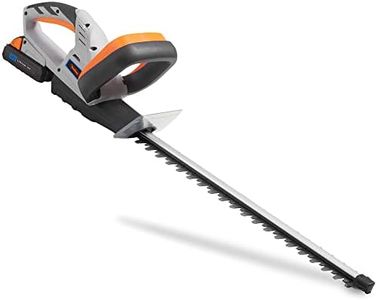We Use CookiesWe use cookies to enhance the security, performance,
functionality and for analytical and promotional activities. By continuing to browse this site you
are agreeing to our privacy policy
10 Best Battery Hedge Trimmers
From leading brands and best sellers available on the web.Recommended lists
Buying Guide for the Best Battery Hedge Trimmers
Choosing the right battery hedge trimmer can make your gardening tasks much easier and more efficient. When selecting a hedge trimmer, it's important to consider various specifications that will determine how well the tool meets your needs. Here are some key specs to look at and how to navigate them to find the best fit for you.Battery VoltageBattery voltage indicates the power output of the hedge trimmer. Higher voltage means more power, which can be useful for cutting through thicker branches. Typically, battery hedge trimmers come in voltages ranging from 18V to 80V. For light trimming and maintenance of small hedges, a lower voltage (18V-24V) is sufficient. For medium to large hedges with thicker branches, a higher voltage (36V-80V) will provide the necessary power. Consider the size and type of hedges you have to determine the appropriate voltage.
Battery Capacity (Ah)Battery capacity, measured in ampere-hours (Ah), determines how long the hedge trimmer can run on a single charge. A higher Ah rating means longer runtime. Battery capacities typically range from 2.0Ah to 5.0Ah or more. If you have a large garden or need to trim for extended periods, a higher capacity battery (4.0Ah-5.0Ah) will be beneficial. For smaller gardens or shorter tasks, a lower capacity battery (2.0Ah-3.0Ah) should suffice. Match the battery capacity to the size of your trimming tasks to ensure you have enough runtime.
Blade LengthBlade length affects the reach and efficiency of the hedge trimmer. Longer blades can cover more area in a single pass, making them ideal for large hedges. Blade lengths typically range from 16 inches to 30 inches. For small to medium-sized hedges, a blade length of 16-22 inches is usually adequate. For larger hedges or professional use, consider a blade length of 24-30 inches. Choose a blade length that matches the size of your hedges and the level of precision you need.
Blade GapBlade gap refers to the distance between the teeth on the blade, which determines the maximum branch thickness the trimmer can cut. Blade gaps usually range from 0.5 inches to 1.5 inches. For fine, detailed trimming of small branches, a smaller blade gap (0.5-0.75 inches) is suitable. For thicker branches and more robust trimming, a larger blade gap (1.0-1.5 inches) is necessary. Consider the thickness of the branches you need to trim to select the appropriate blade gap.
WeightThe weight of the hedge trimmer affects how easy it is to handle and maneuver. Lighter trimmers are easier to use for extended periods and reduce fatigue. Battery hedge trimmers typically weigh between 5 to 10 pounds. If you have a lot of trimming to do or need to work for long periods, a lighter trimmer (5-7 pounds) will be more comfortable. For shorter tasks or if you need more power, a slightly heavier trimmer (8-10 pounds) may be acceptable. Balance the weight with your physical capability and the duration of your tasks.
ErgonomicsErgonomics refers to the design of the hedge trimmer and how comfortable it is to use. Features like adjustable handles, soft grips, and well-balanced designs can make a big difference in user comfort. Look for trimmers with ergonomic features that suit your handling preferences. If you have specific needs, such as limited hand strength or mobility issues, prioritize models with adjustable and cushioned handles. Comfort and ease of use are crucial for preventing strain and ensuring a pleasant trimming experience.
Noise LevelNoise level is an important consideration, especially if you live in a quiet neighborhood or prefer a quieter operation. Battery hedge trimmers are generally quieter than gas-powered ones, but noise levels can still vary. Noise levels are measured in decibels (dB), and lower numbers indicate quieter operation. If noise is a concern, look for models with noise levels around 85 dB or lower. Consider your environment and personal preference for noise when selecting a hedge trimmer.

